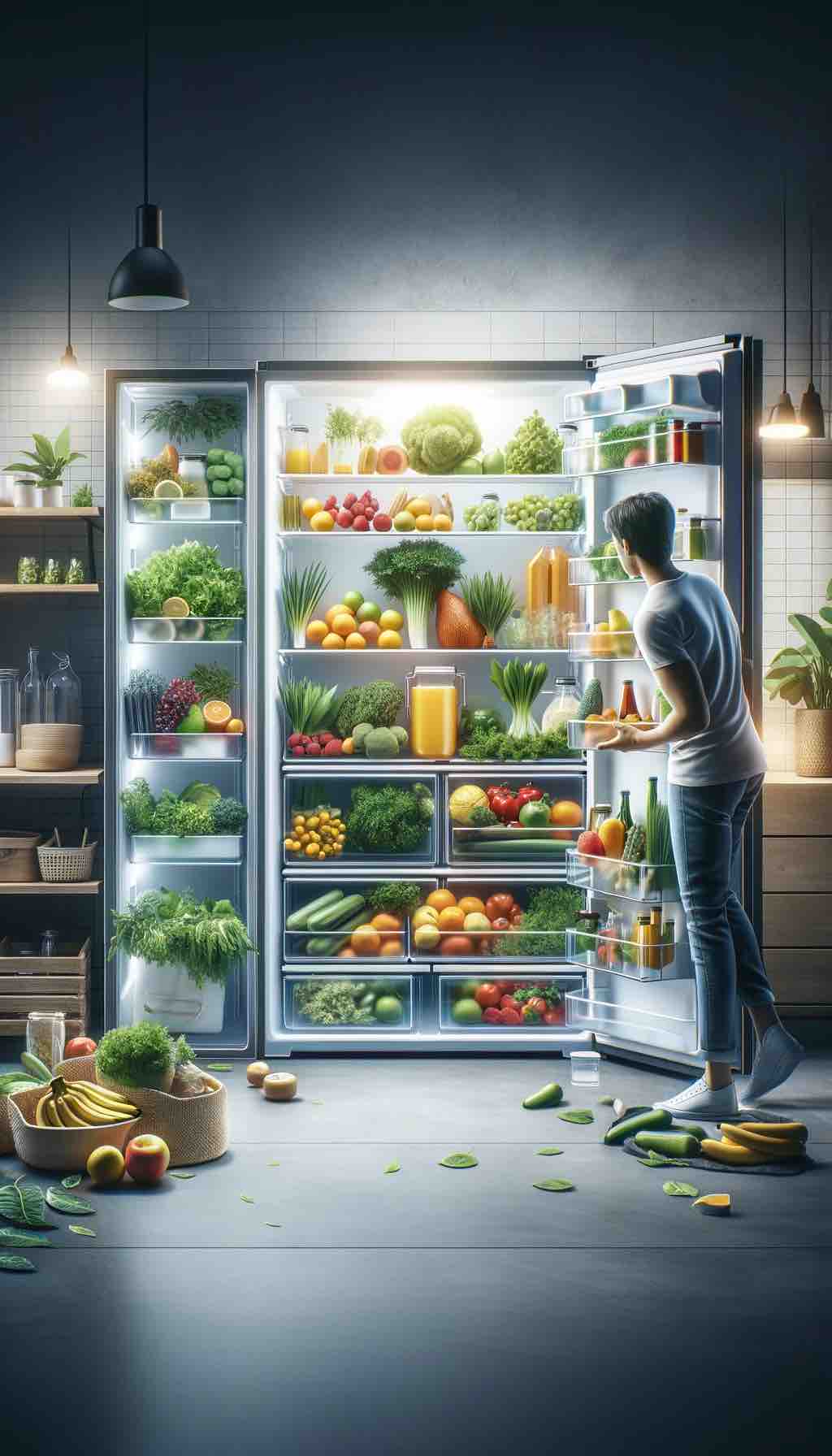
In a world where bigger often means better, we sometimes forget to ask: does this apply to our refrigerators? With large fridges becoming a staple in many households, it’s time to delve deeper into what this means for our eating habits, particularly our consumption of fresh foods.
The Size and Freshness Dilemma
A large fridge seems like the ultimate solution for storing more fresh produce. But does it really translate to eating fresher and healthier? Let’s unwrap this.
1. The Psychology of Space: A spacious fridge might encourage bulk buying, leading to an ‘out of sight, out of mind’ scenario. That bunch of kale pushed to the back can easily be forgotten, only to be discovered when it’s past its prime.
2. The Freshness Illusion: Just because it’s in the fridge doesn’t mean it’s fresh. The journey of produce from farm to fridge often takes longer than we realize. By the time those greens reach your crisper drawer, they might have already lost some nutritional value.
Optimizing Large Fridge Use for Freshness
1. Strategic Shopping: Buying in bulk isn’t a bad idea, but it needs to be strategic. Prioritize produce with a longer shelf life for bulk buys. Leafy greens might not be the best candidate for this, but apples, carrots, and beets are.
2. Batch Cooking and Freezing: Use your large fridge’s freezer effectively. Cook in large batches and freeze portions. This not only saves time but also ensures you have a stock of home-cooked meals, reducing reliance on less fresh, processed foods.
3. Regular Inventory Checks: Keep tabs on what’s in your fridge. A weekly inventory can help you use up produce that’s on the brink of going bad, ensuring you eat as fresh as possible.
Fresh vs. Frozen: A Nutritional Perspective
1. The Frozen Advantage: Contrary to popular belief, frozen produce can be just as nutritious as fresh. Vegetables and fruits are often frozen immediately after harvest, preserving their nutrients.
2. Diversify Your Diet: Incorporate both fresh and frozen produce into your diet. While fresh produce offers certain enzymes and textures, frozen goods can add convenience and variety.
Tackling the Freshness Myth
1. The Nutrient Loss Reality: Understand that some nutrient loss is inevitable, whether produce is stored in a fridge or on a countertop. The key is to consume a diverse range of fruits and vegetables to balance out any potential nutrient deficits.
2. Embracing Imperfection: Not every fruit or vegetable in your fridge needs to look Instagram-worthy. Embrace the imperfect ones – they often taste just as good and are equally nutritious.
Your Fridge, Your Rules
1. Organizing for Success: Create zones in your fridge for different types of produce and label them. This not only helps in keeping track but also ensures better airflow and temperature control.
2. Understanding Produce Needs: Some fruits emit gases that can cause other produce to spoil faster. Store such fruits separately. Similarly, understand which vegetables thrive in humidity and which don’t.
Final Thoughts: The Fresh Approach
Owning a large fridge offers the potential for maintaining a diverse and nutritious diet, but it also requires mindfulness. It’s about balancing the convenience of bulk shopping with the necessity of consuming fresh and nutritious foods. Understanding the nuances of storing different types of produce, regularly rotating your stock, and incorporating both fresh and frozen foods into your diet can help maximize the benefits of your spacious fridge.
So, next time you open your fridge, think of it as a treasure chest of nutrients and flavors, waiting to be explored and enjoyed in the freshest form possible. Remember, the size of your fridge isn’t the deciding factor in how fresh your food is – it’s all about how you use it. 🌿🍓🍋🥕🍲🧊🌟
10 FAQs for Optimizing Large Fridge Use
1. How do I prevent food waste with a large fridge?
- Regularly check and rotate items. Use older items first and plan meals around what needs to be consumed soon.
2. What’s the best way to organize a large fridge?
- Create specific zones (e.g., dairy, produce, leftovers) and use clear containers for visibility. This keeps things accessible and orderly.
3. How can I ensure I’m eating fresh enough with a large fridge?
- Buy a mix of fresh and longer-lasting produce, and incorporate frozen fruits and vegetables for variety and convenience.
4. Is it better to buy fresh or frozen produce?
- Both have their benefits. Fresh produce is great when in season, while frozen is picked at peak ripeness and is often just as nutritious.
5. What temperature should I keep my fridge at?
- Keep your refrigerator below 40°F to slow bacterial growth and keep food fresh.
6. Can storing certain foods together cause spoilage?
- Yes, some fruits emit ethylene gas that can accelerate ripening in other produce. Store these separately.
7. How often should I clean my fridge?
- A thorough cleaning every month is ideal to maintain hygiene and check for expired items.
8. What’s the best way to store leafy greens?
- Keep them in airtight containers with paper towels to absorb excess moisture.
9. How do I manage bulk purchases with a large fridge?
- Freeze what you won’t use immediately, and be mindful of perishable items’ shelf life.
10. How can I make my large fridge more energy-efficient?
- Avoid overpacking, maintain a steady temperature, and ensure the door seals are tight.
Blog Tags for the Post
fridge organization, food freshness, healthy eating, kitchen hacks, large appliances, food storage, nutrition tips, zero waste cooking, fresh produce, meal planning









